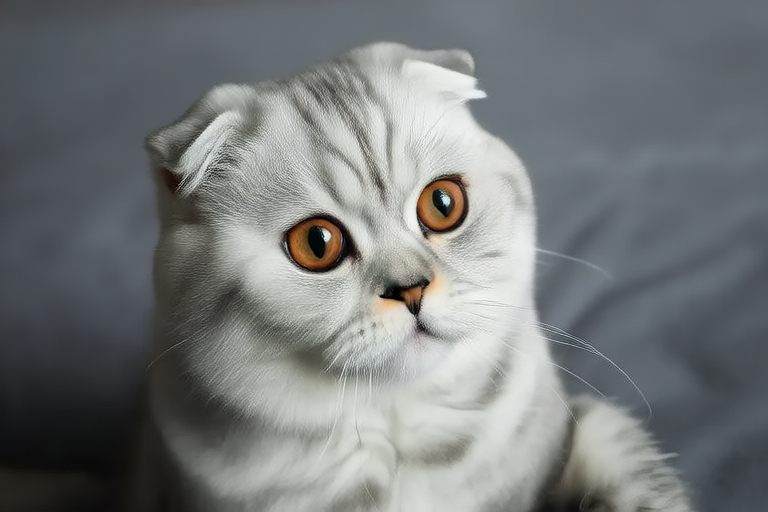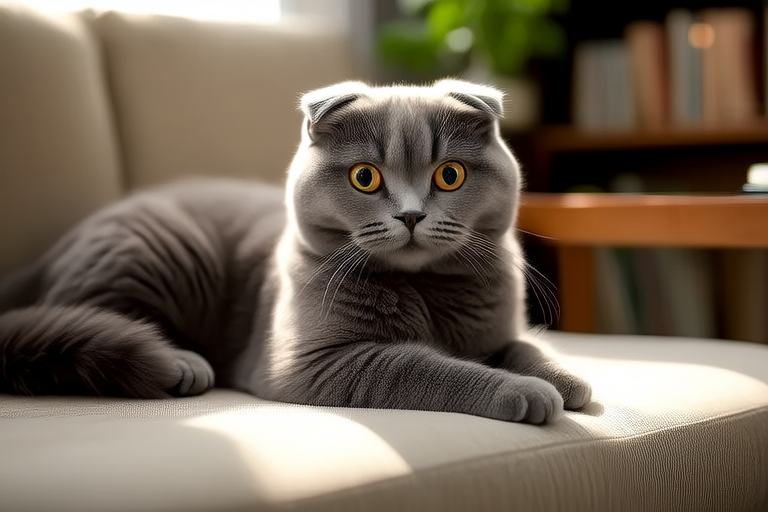
Living with a Scottish Fold: Tips for First-Time Cat Parents
Welcome to the wonderful world of Scottish Fold cats! Known for their distinctive folded ears, these charming felines are a joy to have around. Their appearance alone is enough to draw attention, but it’s their friendly and adaptable nature that truly sets them apart. If you’re a first-time cat parent considering bringing a Scottish Fold into your home, this guide will help you navigate the unique aspects of caring for one of these special creatures.
The Unique Characteristics of Scottish Folds
The most recognizable feature of a Scottish Fold is, of course, its folded ears. This genetic mutation causes the cartilage in the ear to fold forward and down, giving the cat a distinctively cute look. However, not all kittens born to Scottish Fold parents will have folded ears; some will have straight ears, which are equally adorable. Despite their unique appearance, Scottish Folds are known for their gentle demeanor and social nature. They tend to be very affectionate and enjoy spending time with their human companions.
Dietary Needs of Scottish Folds
Feeding your Scottish Fold the right diet is crucial for their overall health and well-being. Like all cats, they require a balanced diet rich in protein, fats, and essential nutrients. High-quality commercial cat foods are usually sufficient, but it’s important to read labels carefully and choose a product that meets the nutritional standards set by organizations like AAFCO (Association of American Feed Control Officials). Avoid feeding your cat table scraps or human food, as these can lead to obesity and other health problems. Fresh water should always be available, and you might consider a water fountain to encourage more consumption.
Grooming Requirements
Scottish Folds have short, dense coats that require regular grooming to prevent matting and skin irritations. While they are generally low-maintenance compared to long-haired breeds, they still need weekly brushing to remove loose hair and distribute natural oils through their fur. Pay special attention to areas where mats tend to form, such as behind the ears and under the legs. Bathing should only be done when necessary, as frequent bathing can strip away the protective oils in their coat. Use a mild, pet-friendly shampoo and ensure thorough rinsing to avoid any residue.
Common Health Issues
Unfortunately, Scottish Folds are prone to certain health issues due to their genetic makeup. One of the most significant concerns is osteochondrodysplasia, a condition affecting the joints and cartilage, which can lead to painful arthritis. To minimize the risk, keep your cat at a healthy weight and provide them with soft bedding. Regular visits to the veterinarian are essential to monitor their joint health and address any issues early. Additionally, Scottish Folds may be susceptible to polycystic kidney disease, so routine check-ups and blood tests are recommended to catch this condition before it progresses.
Creating a Safe and Stimulating Environment
Your home should be a sanctuary for your Scottish Fold, offering both safety and stimulation. Ensure that all potential hazards are out of reach, including toxic plants, small objects that could be swallowed, and household chemicals. Install secure window screens or use cat-safe window guards to prevent accidental falls. Provide plenty of climbing opportunities with cat trees, shelves, and perches. Interactive toys and puzzle feeders can help keep your cat mentally engaged and prevent boredom. A scratching post is also a must-have, as it allows your cat to maintain healthy claws and relieve stress.
Training Techniques
While cats are often perceived as independent creatures, they can indeed be trained with patience and positive reinforcement. Start by establishing a routine for feeding, playtime, and litter box usage. Reward desired behaviors with treats, praise, or play sessions. Clicker training can be particularly effective, as it provides immediate feedback to your cat. Teaching basic commands like ‘come’ or ‘sit’ can strengthen the bond between you and your feline friend. Remember that consistency is key, and each cat learns at their own pace.
Understanding Your Scottish Fold’s Behavior
Understanding your cat’s body language and vocalizations is vital for building a strong relationship. Scottish Folds are generally quiet, but they can communicate through subtle cues. A slow blink indicates contentment, while flattened ears might signal fear or discomfort. Purring is often a sign of happiness, but it can also occur when a cat is in pain or stressed. Spend time observing your cat’s interactions and responses to different stimuli to better interpret their needs and emotions. By fostering open lines of communication, you can ensure your cat feels safe and secure in your home.
The Rewarding Experience of Owning a Scottish Fold
Owning a Scottish Fold is a deeply rewarding experience. These cats offer unconditional love and companionship, enriching the lives of those fortunate enough to share their homes with them. Their playful yet calm demeanor makes them ideal companions for families and individuals alike. By providing a loving environment and meeting their physical and emotional needs, you can create a lifelong bond with your Scottish Fold. The joy they bring into your life is immeasurable, and the memories you’ll create together will last a lifetime.
Further Learning Resources
If you’re eager to learn more about Scottish Folds, there are numerous resources available. Books, magazines, and online forums dedicated to cat care and breeding offer valuable insights. Joining local or online communities of Scottish Fold enthusiasts can also provide support and advice from experienced cat owners. Additionally, attending workshops or seminars on cat behavior and health can enhance your understanding of your pet’s needs. With continued education, you’ll be better equipped to provide the best possible care for your beloved Scottish Fold.





